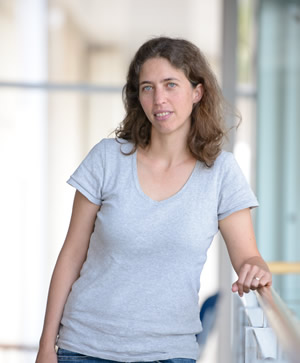Dr. Noam Stern-Ginossarby Dr. Estefanía Sánchez Vásquez  Even amidst a pandemic Dr. Noam Stern-Ginossar thinks very highly of viruses. As a group leader at the Department of Molecular Genetics at the Weizmann Institute of Science in Rehovot, Israel. Dr. Stern-Ginossar explores the different strategies that viruses use to infect their host cells. By using cytomegalovirus (CMV), a herpes virus that infects the majority of the world's population, she is trying to uncover how a primary viral infection leads to latency. Her long-standing goal is to try to decipher the factors that dictate latent infection in some cells while driving others into lysis. Importantly, reactivation from latency causes severe disease in immunocompromised individuals; still, the current molecular understanding of latency is very limited. Recently, for obvious reasons, Dr. Stern-Ginossar's group has become interested in SARS-CoV-2 and the mechanisms this virus uses to interfere with host gene expression. After receiving her doctoral degree in Prof. Ofer Mandelboim's lab (Hebrew University of Jerusalem), Dr. Stern-Ginossar was drawn to the fascinating world of virology. As a post-doc of Prof. Jonathan Weissman (University of California San Francisco, US), she was amazed by the devastating potential that some viruses could develop in the human body. She explained, "Understanding how a small piece of RNA or DNA, which codes for a limited number of proteins, can take over our cells has always fascinated me. Like all herpesviruses, cytomegalovirus has co-evolved with humans for millions of years. This model system is ideal for studying interactions with the host, and it enables discoveries about cellular processes."
Her journey into virology hasn't always been easy. The first big challenge was the transition from being an experienced PhD student doing immunology in Israel to a big systems-biology lab at UCSF. Later on, the second challenge was the next step of her career: starting her own lab. She explained, "The transition from being surrounded by amazingly smart people in a cutting-edge environment to an empty room that was named as my lab." She added, "In both cases, it was mostly an internal battle during which I had to convince myself that I can pull this through. What helped me in both cases was to step back and put everything in proportion. This allowed me to focus on the enjoyable part of doing science, and with time everything else just fell into place." Her own mentors also helped her grow as a scientist through both transitions: "Ofer Mandelboim taught me not to fear trying new things and to believe in myself. I still feel that these are the pillars of being a scientist. My post-doc advisor, Jonathan Weissman, taught me to look at the bigger picture while focusing on the most important questions." For trainees, she added, "Embrace the fact that doing research is a long journey with lots of ups and downs. Don't give up quickly and enjoy - and celebrate - all the small victories along the way." The RNA Society has also played a role in her scientific journey. "Being part of a society is an essential part of the scientific process," she said. "Hearing other people's research always helps to reflect on my work. Also, being able to chat about biological problems and hearing other people's perspectives is stimulating, and this drives our work forwards."
As everything in life, Dr. Noam Stern-Ginossar's favorite RNA keeps changing, but right now, it's virally-encoded lncRNAs because they are incredibly abundant but still poorly characterized. You can find her on Twitter as @SGinossarLab or visit her group's website. |
